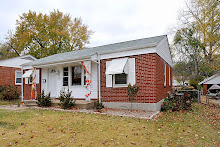Back to the topic - Saint Louis was once a city with streetcars everywhere.
 I then read the following:
I then read the following:The Great American Streetcar Scandal was the sequence of events in which General Motors, Firestone Tire, Standard Oil of California and Phillips Petroleum formed the National City Lines (NCL) holding company, which acquired most streetcar systems throughout the United States, dismantled them, and replaced them with buses in the mid 20th century. It is alleged by historians that NCL's companies had an ulterior motive to forcibly gain mass use of the automobile among the U.S. population by buying up easy-to-use mass light rail transportation countrywide and dismantling it, leaving populations with little choice but to ride their buses. Convicted of violating the Sherman Antitrust Act, GM was fined $5,000 and each executive was ordered to pay a fine of $1 for a conspiracy to force the streetcar systems to buy GM buses instead of other buses (but not for dismantling the streetcar systems, which were also being dismantled by non-NCL owned systems).
Between 1936 and 1950, National City Lines bought out more than 100 electric surface-traction systems in 45 cities, including Detroit, New York, Oakland, Philadelphia, St. Louis, Salt Lake City, Tulsa, Baltimore, Minneapolis, Seattle and Los Angeles, and replaced them with GM buses. The scandal is rehashed in books like Fast Food Nation and the film Who Framed Roger Rabbit; testimony by Government Attorney Bradford Snell to a United States Senate inquiry in 1974 gave the scandal its current prevalence and weight in U.S. popular culture. The scandal also invokes the Interstate Highway System as an additional culprit, because the system began its initial construction in California after the large-scale dismantling of that state's trolley network.
At least I have an answer to my question that I constantly ask. Hopefully GM put some of that money into savings. If we only still had streetcars to get everywhere - gas prices would be a moot point huh?






1 comment:
That is so frustrating! Our city's treatment of mass transit seems so short-sighted to me.
Post a Comment